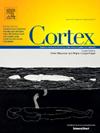Investigating plasticity of the olfactory system through the lens of specific anosmia
IF 3.3
2区 心理学
Q1 BEHAVIORAL SCIENCES
引用次数: 0
Abstract
The olfactory experiences vary widely among individuals. Despite having an otherwise normal sense of smell, some people exhibit specific anosmia, i.e., the inability to detect certain odorants. While genetic factors play a key role in this phenomenon, olfactory perception is also influenced by environment, and repeated exposure to odors (olfactory training) can enhance olfactory sensitivity. In this study, we examined whether olfactory training increases sensitivity towards odors participants were specifically anosmic to, and preliminary investigated whether this training-induced change is stable over time. Initially, we screened 335 participants with healthy sense of smell to identify individuals with specific anosmia towards androstenone, benzyl salicylate, bacdanol, or maltol. Subsequently, 77 participants with at least one specific anosmia underwent 2-months long olfactory training with these four odorants. We observed that following the training, participants became more sensitive towards odors they were specifically anosmic to, whereas sensitivity towards odors they were able to perceive at baseline did not change. However, the effects of olfactory training on specific anosmia were transient – 19 months after the training completion, 9 out of 10 followed-up participants became specifically anosmic towards androstenone again. Altogether, our findings demonstrate that the human olfactory system adjusts to novel odorous inputs, but these environmentally driven changes do not appear to be permanent in healthy participants.
从特异性嗅觉缺失的角度研究嗅觉系统的可塑性。
每个人的嗅觉体验差别很大。尽管有正常的嗅觉,但有些人表现出特殊的嗅觉缺失症,即无法检测到某些气味。虽然遗传因素在这一现象中起着关键作用,但嗅觉感知也受到环境的影响,反复接触气味(嗅觉训练)可以增强嗅觉敏感性。在这项研究中,我们研究了嗅觉训练是否会增加参与者对气味的敏感性,并初步调查了这种训练引起的变化是否随时间稳定。最初,我们筛选了335名具有健康嗅觉的参与者,以确定对雄烯酮、水杨酸苄酯、腰果酚或麦芽糖醇有特定嗅觉缺失的个体。随后,77名至少患有一种特定嗅觉缺失症的参与者接受了为期2个月的嗅觉训练。我们观察到,在训练之后,参与者对他们特别嗅觉的气味变得更加敏感,而对他们在基线时能够感知的气味的敏感性没有改变。然而,嗅觉训练对特异性嗅觉缺失的影响是短暂的——训练完成19个月后,10名随访参与者中有9名再次对雄烯酮产生特异性嗅觉缺失。总之,我们的研究结果表明,人类嗅觉系统会适应新的气味输入,但这些环境驱动的变化在健康参与者中似乎不是永久性的。
本文章由计算机程序翻译,如有差异,请以英文原文为准。
求助全文
约1分钟内获得全文
求助全文
来源期刊

Cortex
医学-行为科学
CiteScore
7.00
自引率
5.60%
发文量
250
审稿时长
74 days
期刊介绍:
CORTEX is an international journal devoted to the study of cognition and of the relationship between the nervous system and mental processes, particularly as these are reflected in the behaviour of patients with acquired brain lesions, normal volunteers, children with typical and atypical development, and in the activation of brain regions and systems as recorded by functional neuroimaging techniques. It was founded in 1964 by Ennio De Renzi.
 求助内容:
求助内容: 应助结果提醒方式:
应助结果提醒方式:


